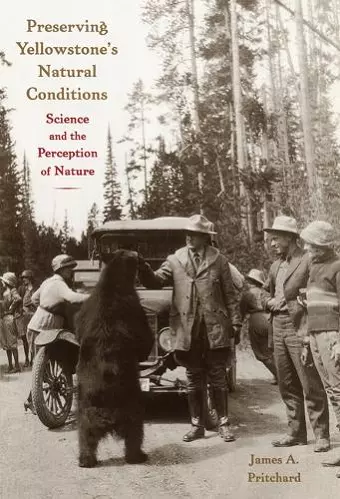Preserving Yellowstone's Natural Conditions
Science and the Perception of Nature
Format:Hardback
Publisher:University of Nebraska Press
Published:1st Sep '99
Currently unavailable, and unfortunately no date known when it will be back

* Tells the story of how Yellowstone went from "balance of nature" to simplistic range, to "ecological process" to size-of-the-ecosystem management
American ecologists seeking to influence founders of the National Park Service had hoped that protection of parks would create preserves where "natural conditions" could exist in an idealized presettlement state. This title demonstrates that even the most up-to-date scientific policy could not reckon with public expectations and animal behavior.American ecologists seeking to influence the founders of the National Park Service had hoped that protection of the parks would create preserves where “natural conditions” could exist in an idealized presettlement state. These hopes, however, produced a bitter irony. In order to secure a naturally functioning park, officials had to provide intensive management to preserve “nature at work.” For the better part of the twentieth century, the forms this management has taken have polarized public opinion. James A. Pritchard’s Preserving Yellowstone’s Natural Conditions demonstrates that even the most up-to-date scientific policy could not reckon with public expectations and animal behavior. When Yellowstone stopped its bear feeding program in an attempt to restore naturally regulated bear populations, the public bemoaned the loss of the spectacle. The bears, meanwhile, had learned to associate humans with food, and the loss of reliable meals brought them into campsites. Park officials had to shoot bears that made a menace of themselves, leaving many people frustrated with the park’s attempts to preserve Yellowstone as a natural ecosystem. Pritchard believes that restoring natural conditions for bears and other animals is a sound idea. Yellowstone, he argues, represents an ecological anchor, a relatively untrammeled slice of nature. Despite decades of tampering, the park provides scientists and managers with an outdoor laboratory for examining natural processes that existed before extensive settlement.
"Pritchard describes the complex history of the interaction among culture, conservation strategies, expanding scientific understanding, institutional structures, and politics in the management of Yellowstone National Park. . . . This is a complicated story, dispassionately told and meticulously documented with 45 pages of notes, references, and a complete index. General readers; undergraduates through professionals."—Choice
“This is one of the five most important books ever written about Yellowstone and perhaps the most important one about ecological management of the park.”—Lee Whittlesey, archivist, Yellowstone National Park
ISBN: 9780803237223
Dimensions: unknown
Weight: 766g
370 pages